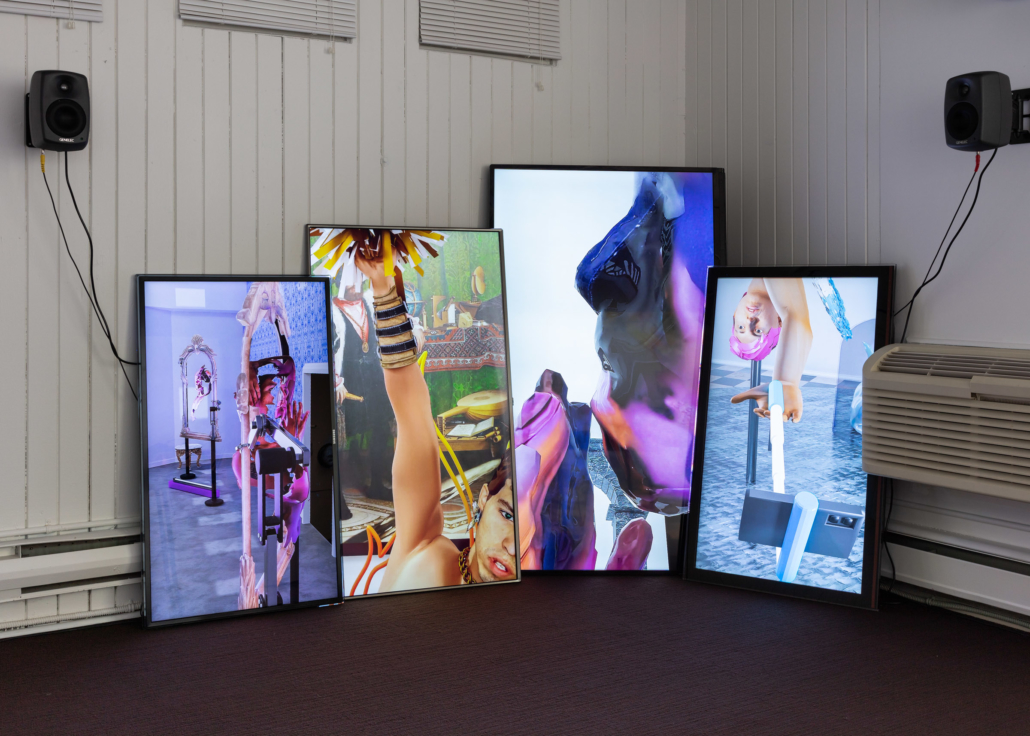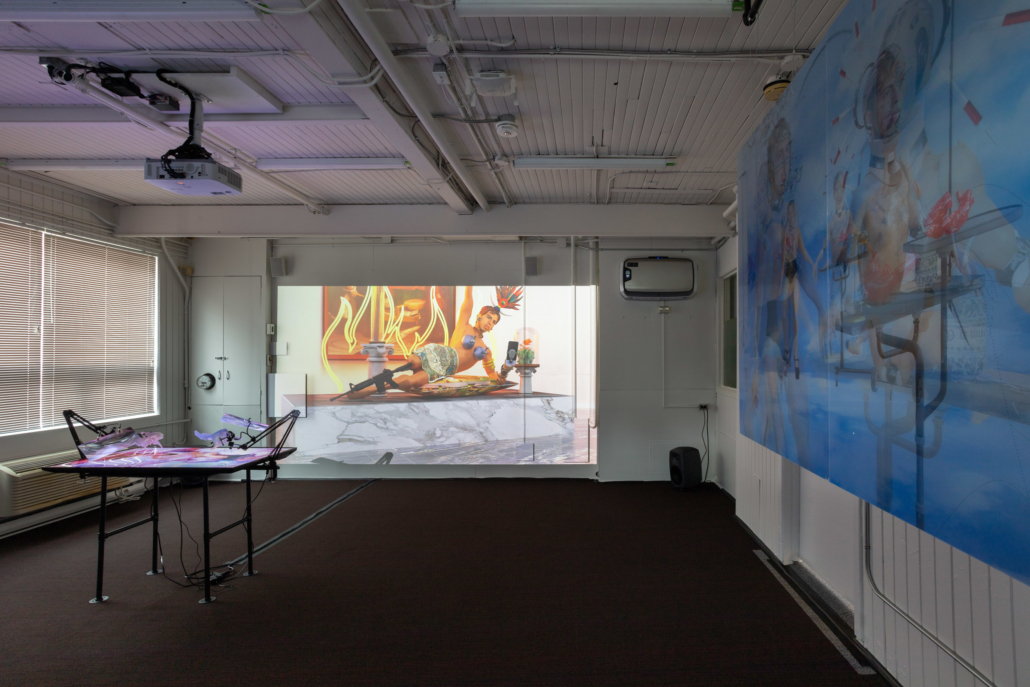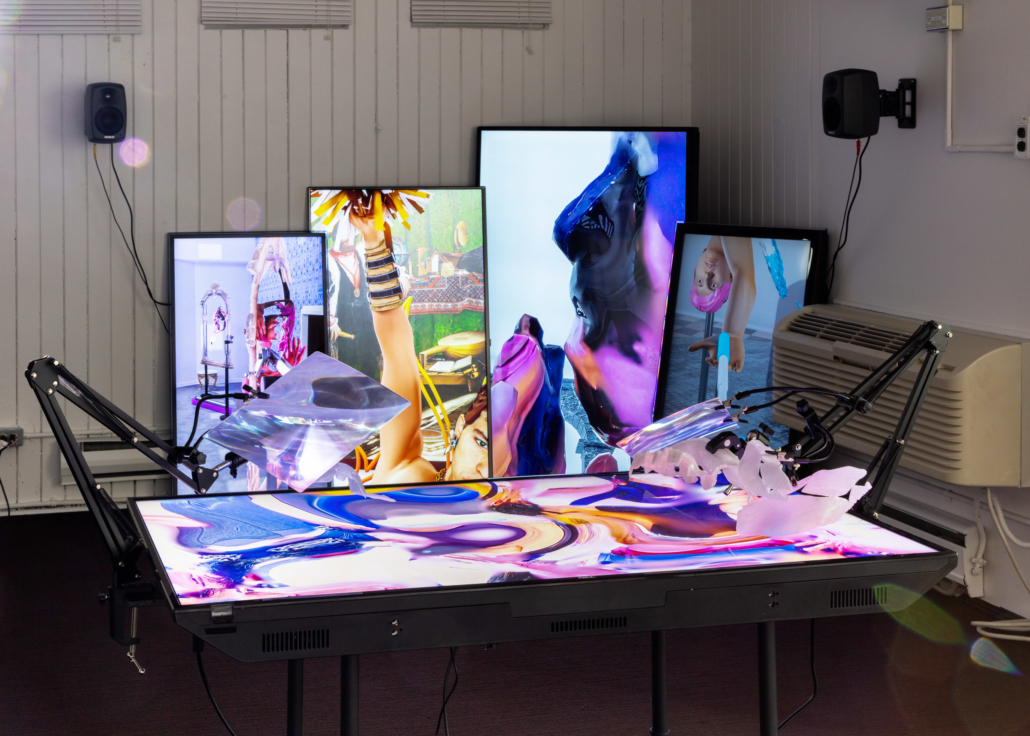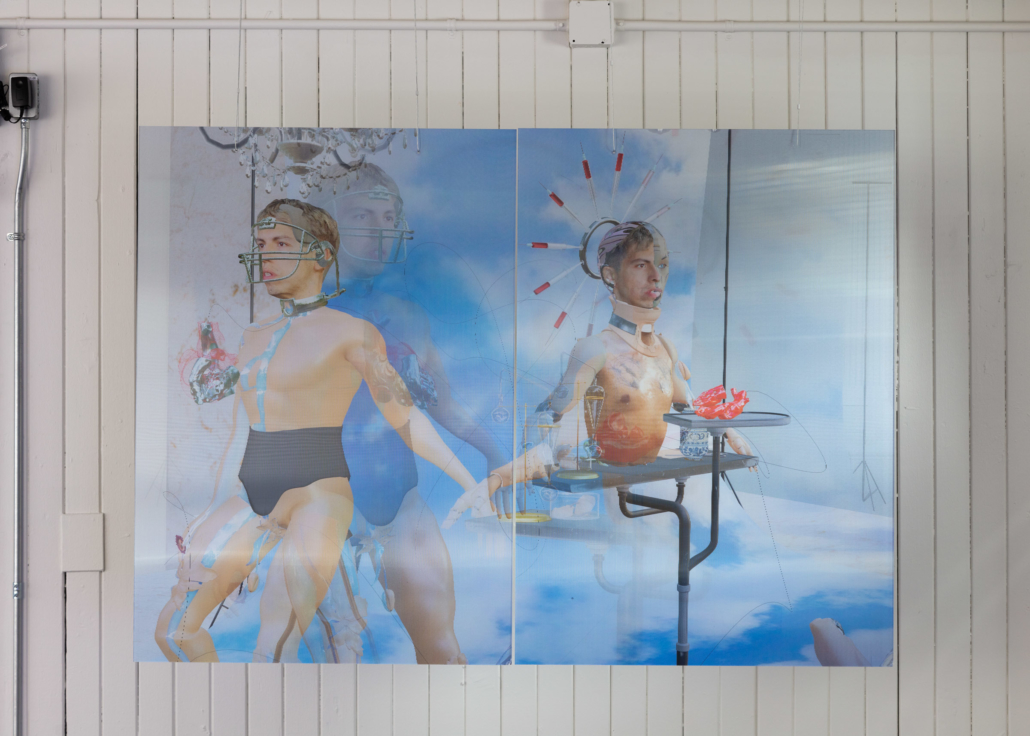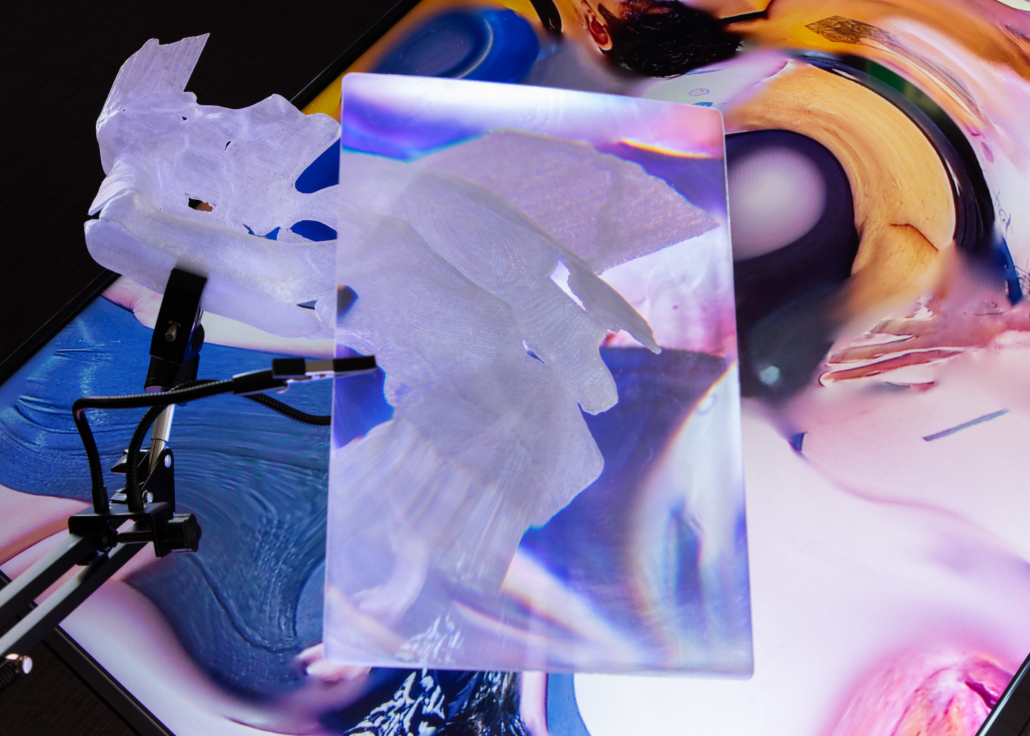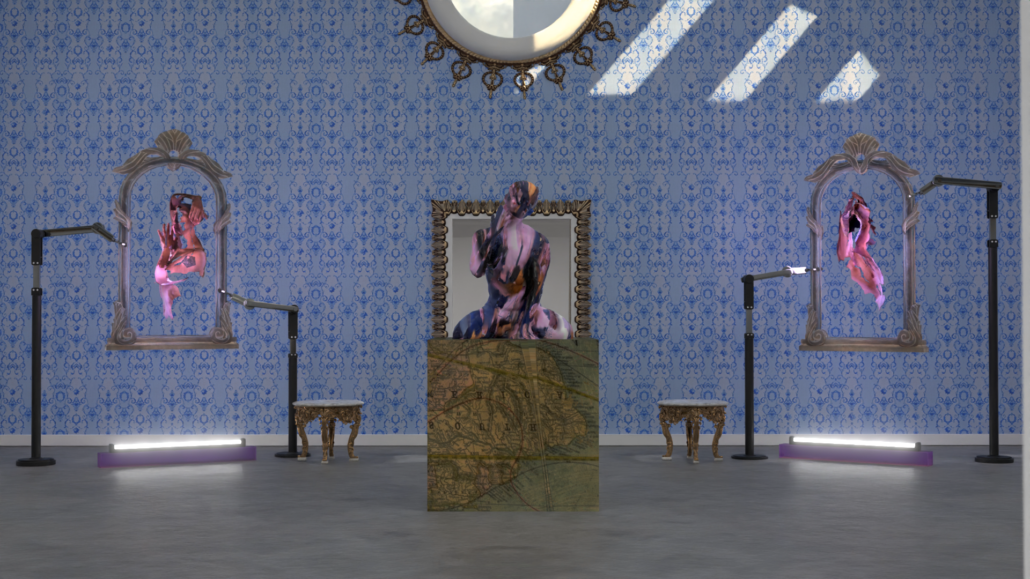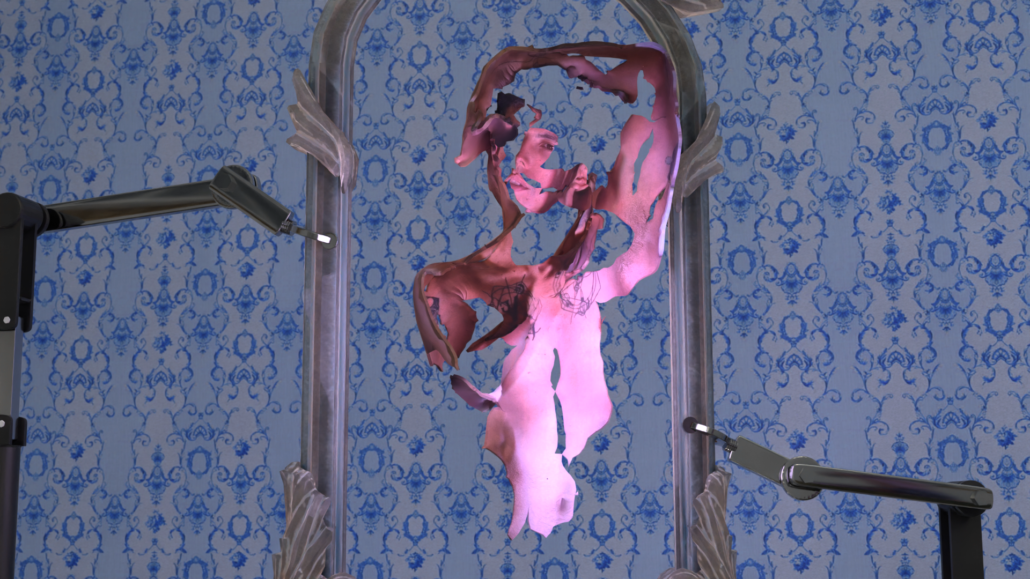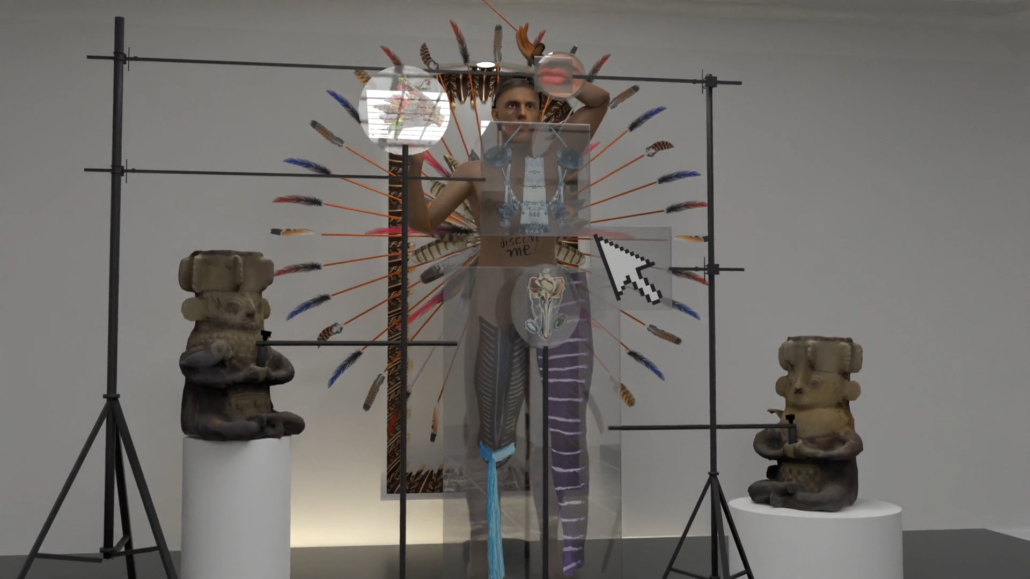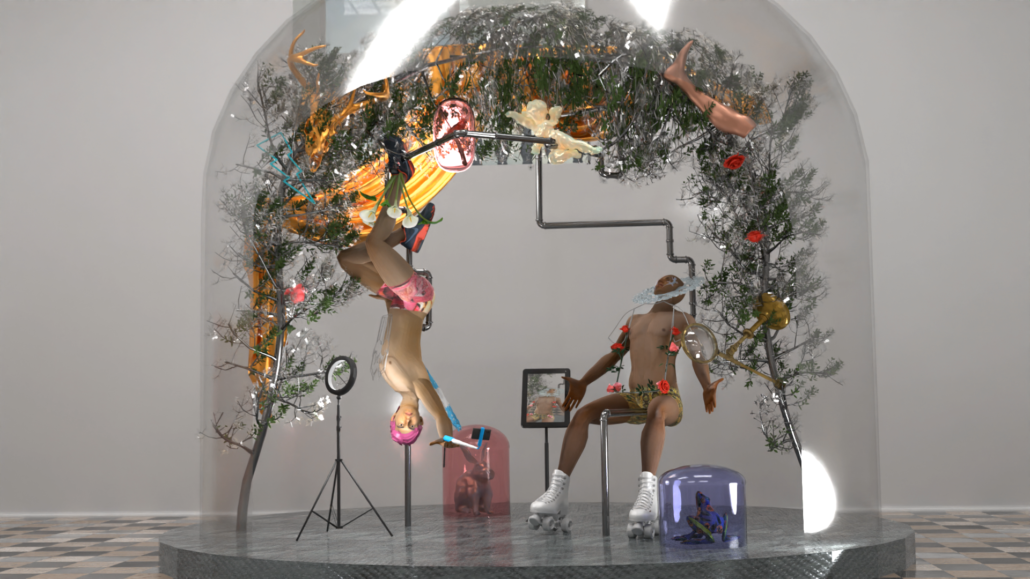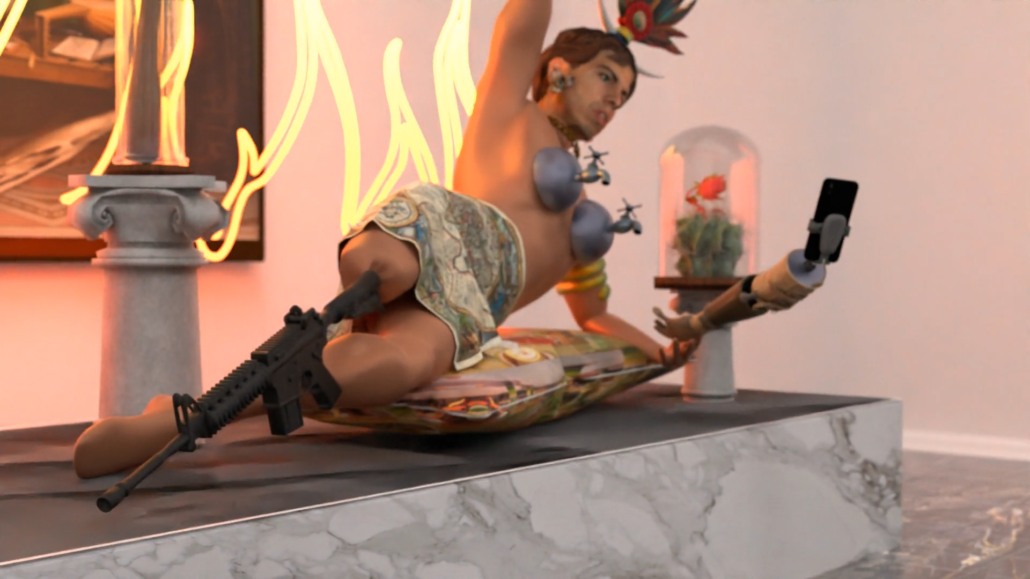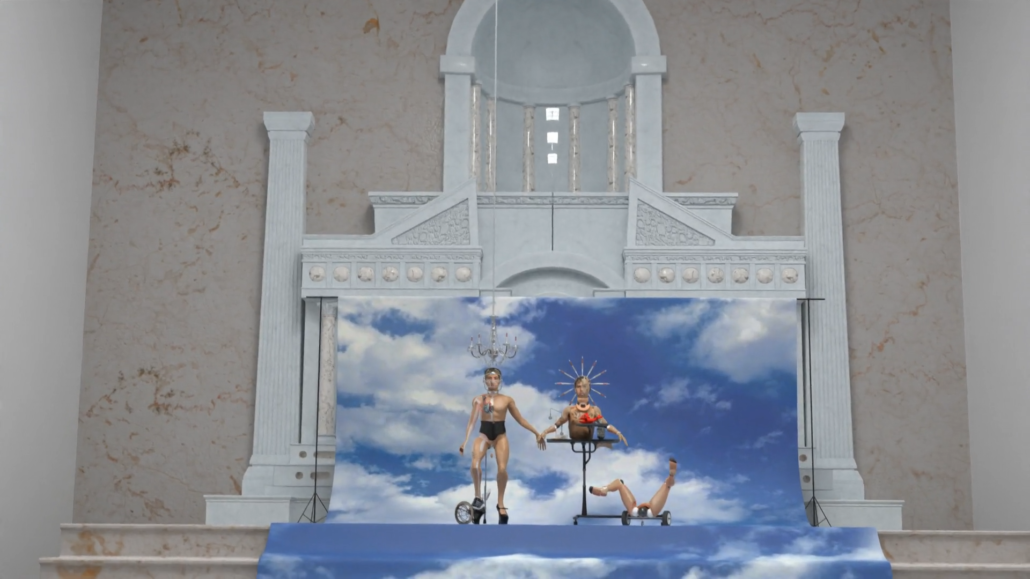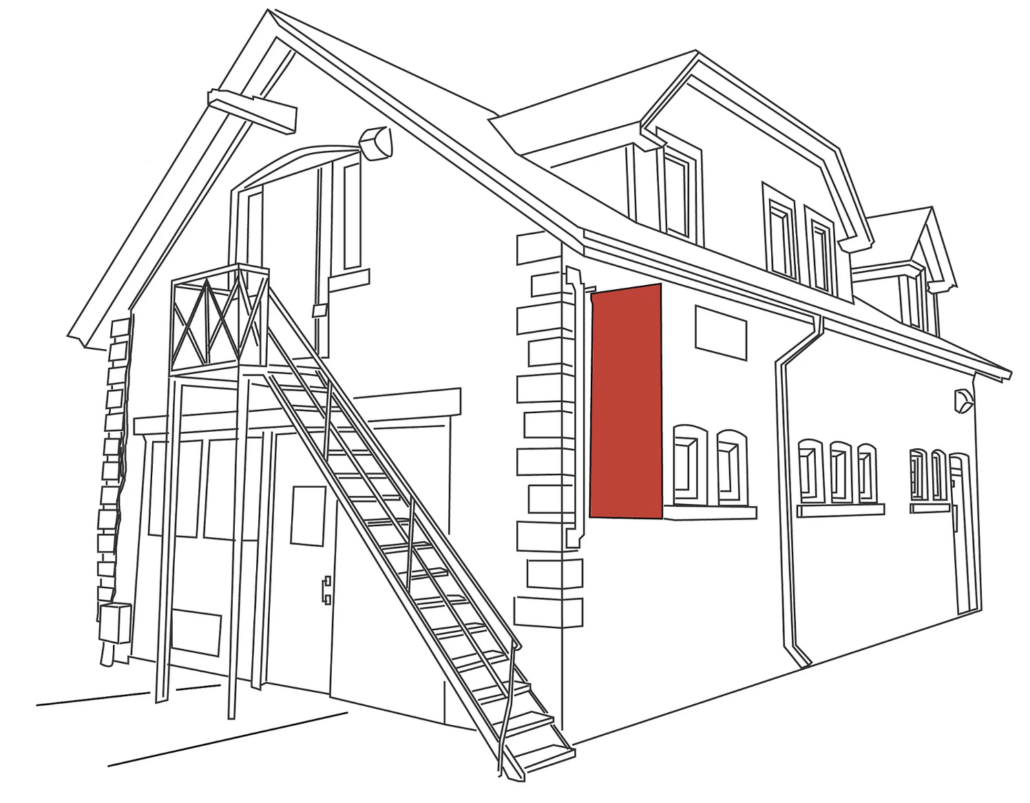Multichannel video installation. 2022.
Variable dimensions.
McLuhan Centre for Culture and Technology, Toronto.
the museum of the copy/pasted identities, video documentation. © Miles Rufelds
the museum of the copy/pasted identities, Installation shot. Photo documentation: Laura Findlay
the museum of the copy/pasted identities is a multichannel video installation developed from 2021 through 2022. The research and exploration started as part of the Permeable Lines residency, at SBC Gallery in Montreal, and concluded with the artist-in-residence inaugural program at the Centre for Culture and Technology, University of Toronto, from July to October 2022.
The project configures a speculative archeology that links the networked body in digital platforms with the museum exhibition display as a way of interrogating otherness in today’s techno-cultural context. The work is based on extensive research on the visual history that the colonial process left in South America, and its legacies within self-archeology and identity.
The installation configures around the main piece “the.museum”, a single-channel projection in which a subjective disembodied camera walks through a museum building. This digital environment is based on real colonial architectures that host museums today at places such as Mexico City, Lima, Santiago, or Cartagena. Every room displays a different sculpture, which presents different forms of self-mediation and technical approaches: body scans, photogrammetry, CGI-generated avatars, among others. These digital renditions exhibit a number of ornamentations, body postures, and visual references from anthropological museum displays and objects, as well as references from modern cinema, pop culture, and art history.
In response to the single-channel -which offers a distanced, more conventional type of viewing- the piece “identity.scape”, a 4-channel monitor installation, shows the same sculptural pieces in a type of impossible viewing. Here, the image is based on the framing that can be achieved through mobile cameras, emphasizing unstable motion, extreme close-ups, and fast speed capturing.
The third piece, “body.masks” is a sculptural monitor-based installation that presents a series of 3D prints of real body scans and two magnifying plastic sheets. The work references at once a dissection bed and the exhibition display common to anthropological museums.
The exhibition is completed with a large-size lenticular print titled “las.yeguas.del.metaverse”, a remake of the iconic piece “Las dos Fridas” by Mexican painter Frida Khalo. This work has been remade and appropriated several times by queer South American artists such as the Chilean performance collective Las yeguas del apocalipsis and the late Peruvian artist Giuseppe Campuzano.
the museum of the copy/pasted identities, Installation shots. Photo documentation: Laura Findlay
Introduction text by Scott Richmond, Director of Centre for Culture and Technology:
Following the Centre’s theme this year, “Our Selfies, Our Selves”, THE MUSEUM OF THE COPY/PASTED IDENTITIES is a continuation of the artist’s work on speculative archeologies of the networked body in digital platforms. The exhibition uses the museum as a metaphor for otherness in today’s highly mediated techno-cultural context. For the exhibition, Gonzalez-Rosas has had their body 3D scanned, and they have used this informational and volumetric avatar as their medium. Working and playing across multiple imaging technologies, González-Rosas’s body appears in various states of apparition and dissolution in lenticular prints, 3D animation, and 3D-printed sculptures.

